Posts Tagged: Claire Kremen
Just inTime for Pollinator Week
Just in time for Pollinator Week. The wild bee research co-authored by 58 bee scientists and published today (June 16) in Nature Communications is drawing a lot of attention--and well it should. Pointing out that wild bee diversity is declining...
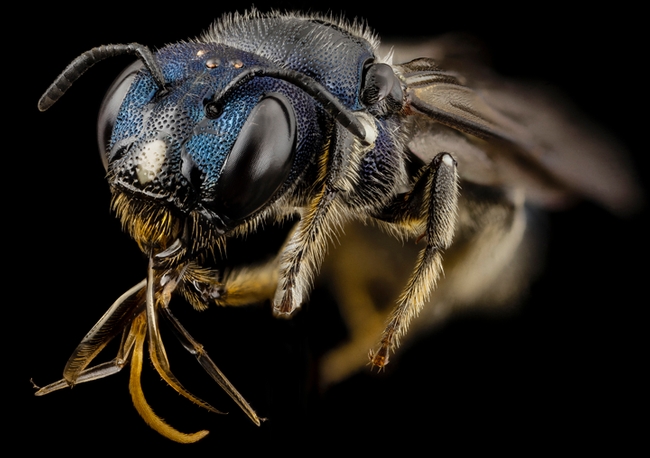
This macro image of a Ceratina bee is the work of Sam Droege of the bee inventory and monitoring program, the U.S. Geological Survey. This image is part of the public domain.
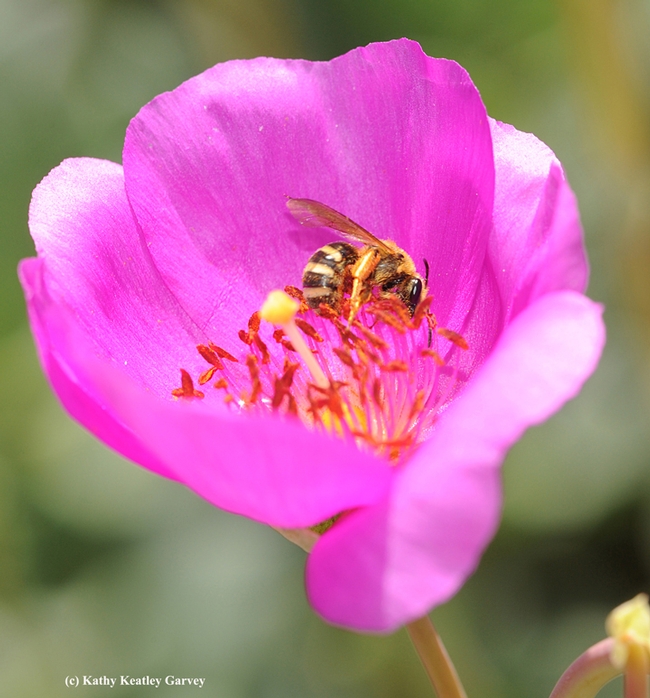
This is a female sweat bee, genus Lasioglossum, on a rock purslane. (Photo by Kathy Keatley Garvey)
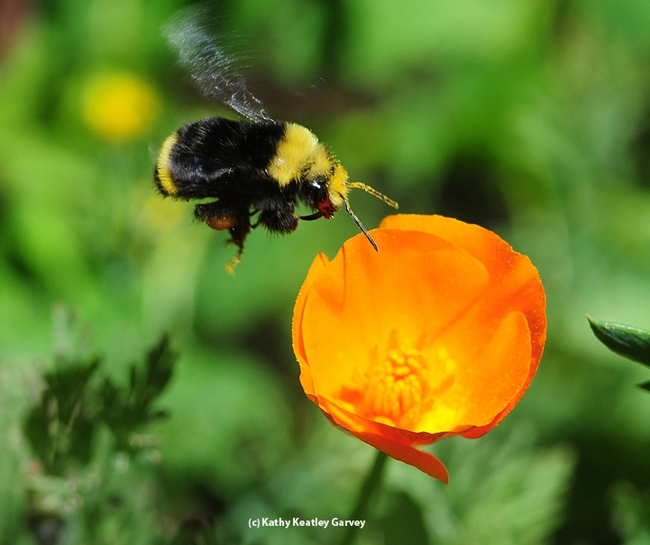
A yellow-faced bumble bee, Bombus vosnesenskii, heads for a California golden poppy. (Photo by Kathy Keatley Garvey)
The Good Guys--and Girls!
Think of them as "the good guys" and "the good girls." Insects such as lacewings, lady beetles and flower flies. We're delighted to see that the Xerces Society for Invertebrate Conservation has just published a 250-page book on "Farming with Native...
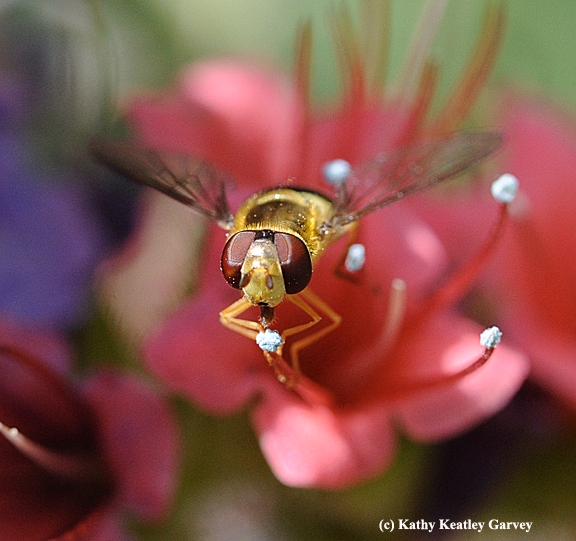
A syrphid fly, aka flower fly or hover fly, nectaring on a tower of jewels. (Photo by Kathy Keatley Garvey)
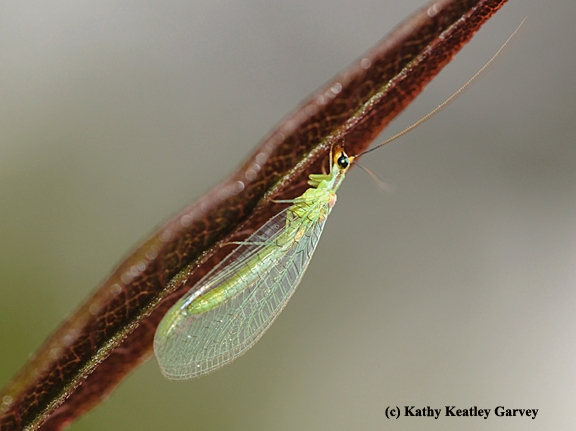
A lacewing glows in the afternoon sun. Larvae eat such soft-bodied insects as mealybugs, psyllids, thrips, mites, whiteflies, aphids, small caterpillars, leafhoppers, and insect eggs, according to the UC IPM website. (Photo by Kathy Keatley Garvey)
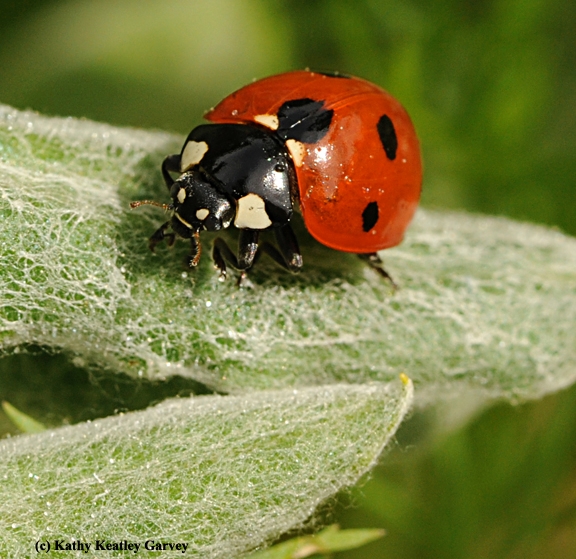
The lady beetle, aka ladybug, is well known for its voracious appetite of aphids. (Photo by Kathy Keatley Garvey)
Aspiring for Better Pollination
We can expect some exciting research to emerge from the U. S. Department of Agriculture's Specialty Crop Research Initiative (SCRI). And UC Davis pollination ecologist Neal Williams, an assistant professor in the Department of Entomology, is a part...
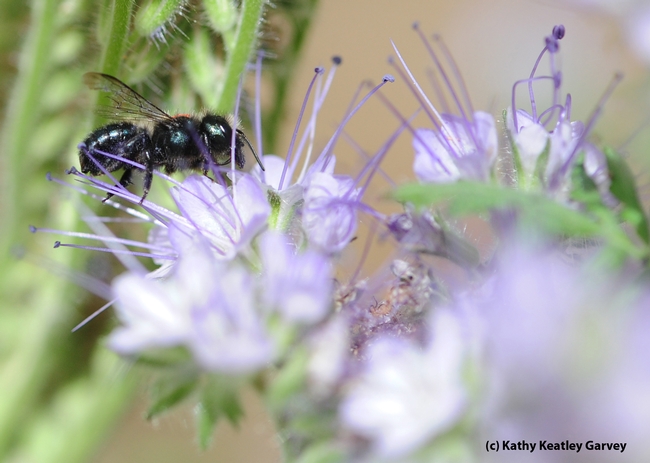
The blue orchard bee or BOB (Osmia) is being studied as an alternative pollinator. (Photo by Kathy Keatley Garvey)
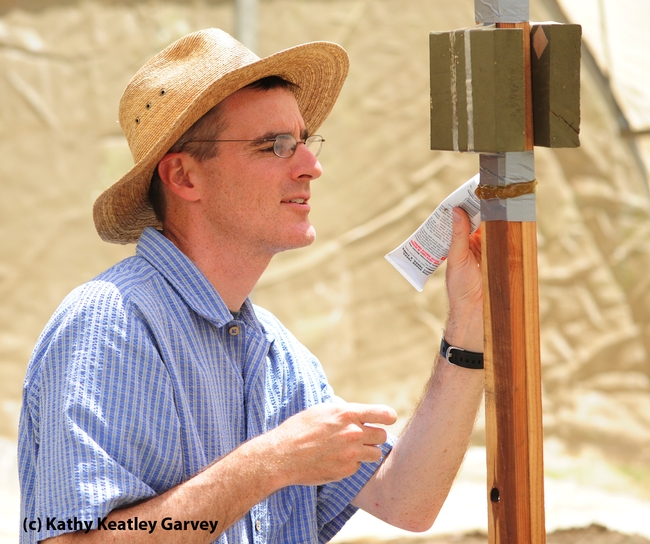
Pollination ecologist Neal Williams working on an Osmia project last summer. (Photo by Kathy Keatley Garvey)
Why This Honey Bee Research Is So Important
They're on to something. Definitely. An international research team has been researching honey bee pollination of almonds in the three-county area of Yolo, Colusa and Stanislaus since 2008, and what these scientists have discovered is astounding. The...
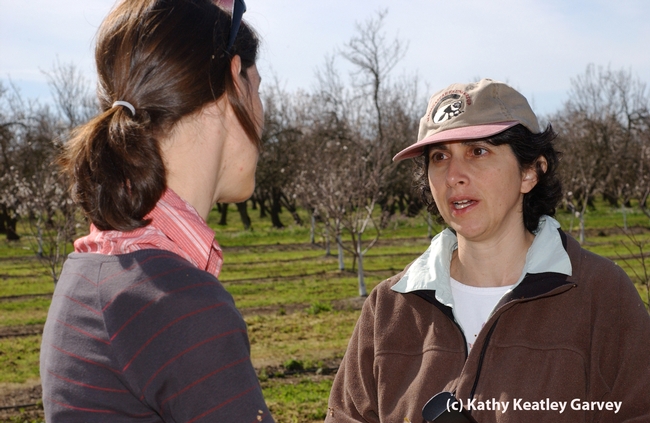
UC Berkeley conservation biologist Claire Kremen (right) confers with colleague Alexandria-Marie Klein, then a postdoctoral fellow in her lab. (Photo by Kathy Keatley Garvey).
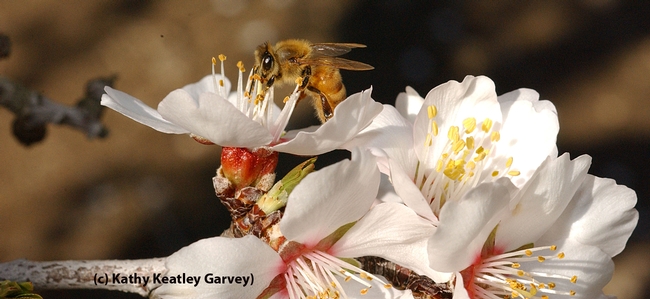
Honey bee visiting an almond blossom in Arbuckle. (Photo by Kathy Keatley Garvey)
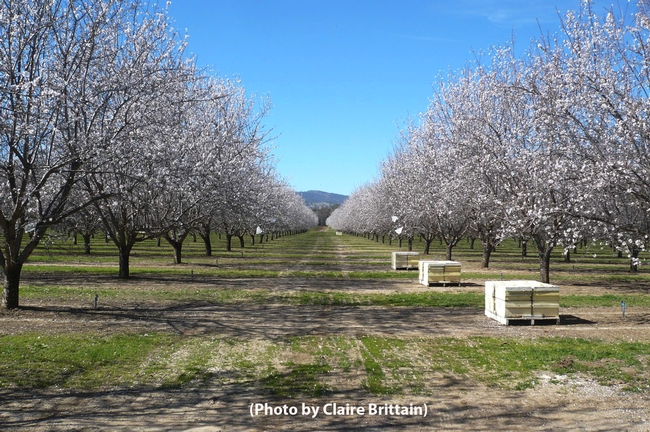
Almond orchard in Capay Valley, Yolo County. (Photo by Claire Brittain)
Not Your Average Garden-Variety Calendar
It's not your average garden variety calendar.It's absolutely bee-utiful. Native bees reign supreme in “Garden Variety Native Bees of North America,” a calendar produced by University of California alumni as a benefit for two non-profit...
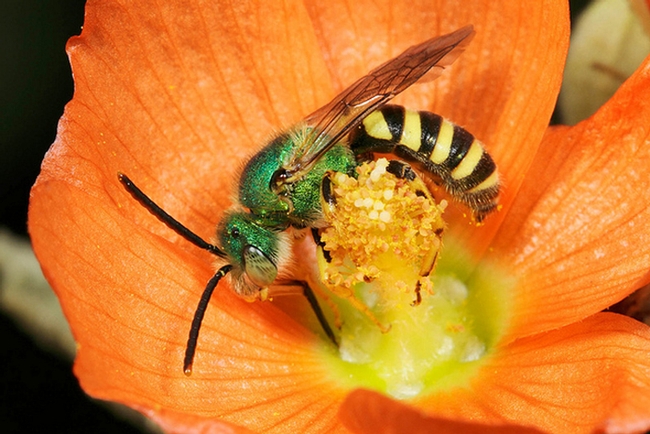
This is one of Rollin Coville's stunning photos of a male green sweat bee, Agapostemon. (Photo by Rollin Coville, used with permission),
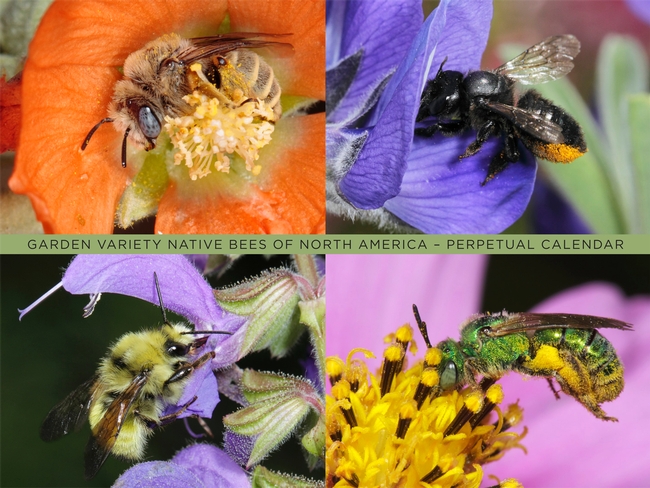
The cover of the calendar, "Garden Variety Native Bees of North America." (Photos by Rollin Coville)

